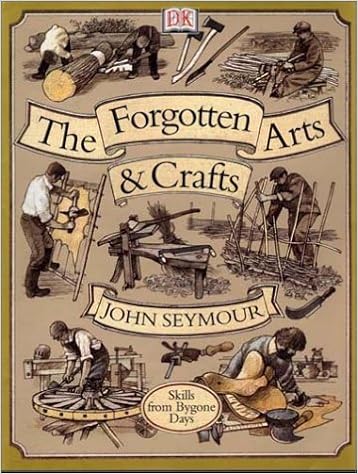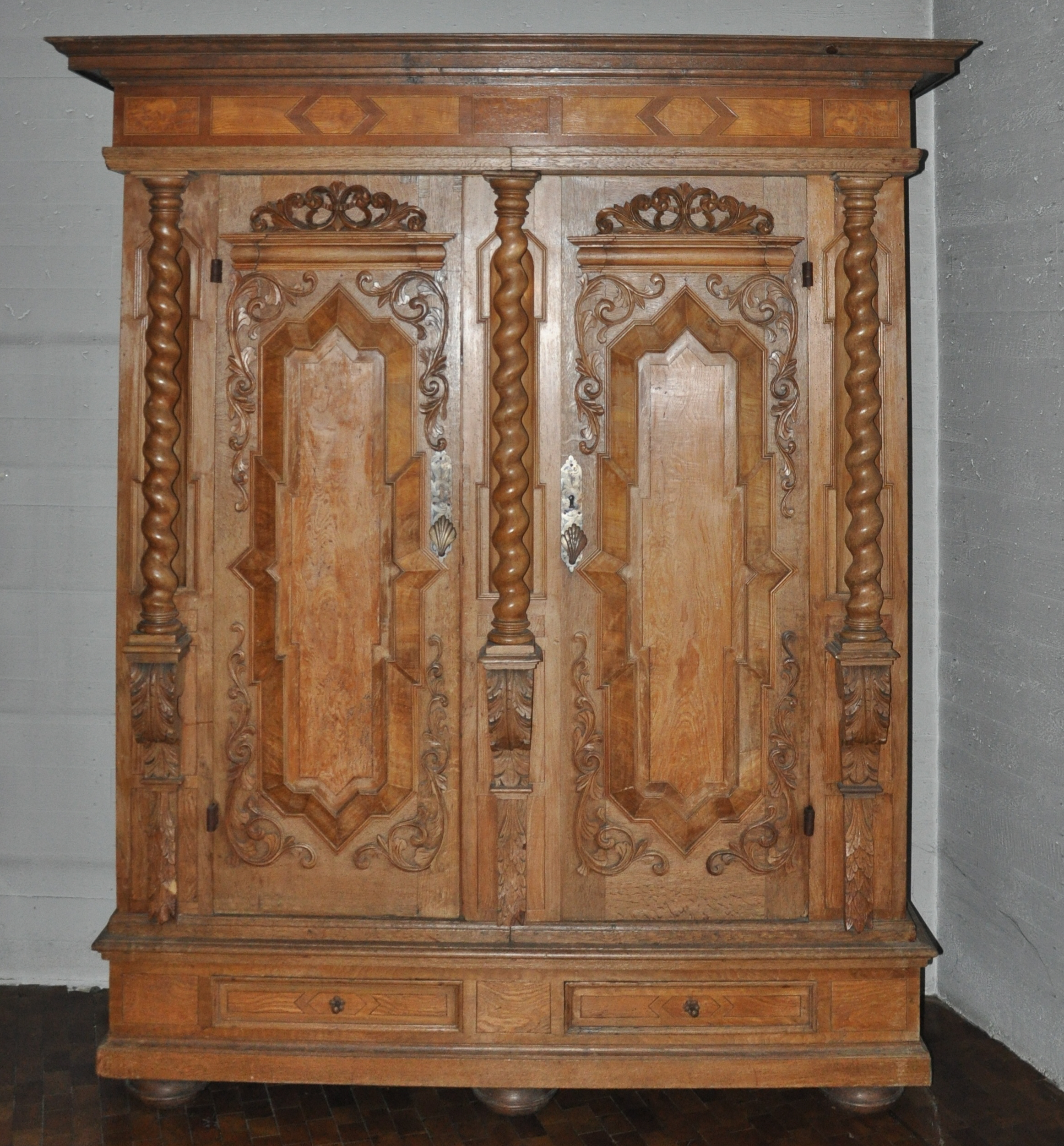Right; moving on...
Yesterday I read Peter Follansbee's blog, in which he began a discussion of the current state of "traditional" woodworking as it is in the world today. You can read all about it here. The main point (as I understand it) is the lack of a traditional foundation for most modern woodworkers, and the attempts to revive old skills without it.
 |
| Peter Follansbee at work, doing his part to keep alive the traditional methods |
As the word, tradition, denotes, this would be something that was handed down from generation to generation so that the work would grow and change, adapting with the times in a very organic way. Peter has suggested, and I concur, that for the most part, this tradition has been "broken". Now, most people who are attempting, or successfully practicing, these "traditional" skills, are coming at it without any prior knowledge or personal experience in these crafts. After reading his blog, I thought to add my comments to the matter, but then realised I had more than just a quick comment to add, and besides, I have my own blog page from which to express myself.
As I already stated, I agree with Mr Follansbee, and his view on the matter, Like him, I also am attempting to revive and keep in motion those methods, long discarded by most modern people who are hell bent on the latest everything, as outmoded, old fashioned, and too time consuming. I find it interesting that in other parts of the world, where I have traveled extensively, and have met craftsmen working in very primitive conditions with only the most rudimentary tools, that they think I must be out of my mind to want to forego the use of machines which are all around me, and revert to the mostly discarded methods of earlier generations.
For these people, and for most in Europe and America, getting the job done as quickly as possible is the primary goal. In a world where one has to earn an income to stay alive, this makes good sense, but it also causes the artist to lose out on the joy of actually doing the job. Is your goal the journey, or the destination? For most people, myself included, getting the job done brings immense satisfaction, and a sense of accomplishment, but for me, the actual act of doing the work can often be more rewarding and enjoyable than the satisfaction that comes with its completion. Once the task is done, one has to forget about it and move on to what is next. When I am doing something by hand, the process takes longer and gives me a chance to get to know the piece I am creating. It becomes an extension of myself, and I have a chance to infuse a bit of my soul into it. I cannot speak for others, but for me, I do not have this same connection with pieces I made with a machine. They were simply a product to give in exchange for some income, not much more.
 |
| Tradition is still very much alive in the Philippines and the things they create every day with only the simplest of tools are amazing |
It does not feel like it could have already been more than 60 years ago, but back in the 1950's John Seymour, traveled about his native UK, and other places in the world, documenting the, at-that-time, nearly vanished traditional craftsmen who were still carrying on the actual tradition of their crafts. The book is a fascinating read, and though it was not an inspiration to me, because I had already embarked on my journey before I discovered the book, it was something to give me resolve to continue in the path that I was choosing to follow. I noticed that all the people featured in the book were either old, or ancient, and thus, when I read it in the 90's, were all, it is fairly safe to say, gone to wherever we go, when we go. This book helped to firm up my belief that someone must take up the tools of the forefathers and continue in their traditions, because it was worth preserving the methods which they used to create the objects of their world.
 |
| Originally published in the late 50's and still a good read, this book covers much of what "traditional crafts" really means. |
When we live in a world where most people think that vegetables, eggs, and meat come from "the supermarket", and everything has a flaming "ap" to make it work, I feel it is important for people to see the actual skills that went into creating the things that our ancestors had all around them. It is also important to remind people that every single new-fangled gadget that they have in their possession is only there because someone long ago, first learned to use a stick and a stone to make something finer and more precise.
Near to where I currently reside, there is a canal that was built in the early 1800's. Whenever I go there for a visit, and see all the blocks of stone cut and fit so perfectly, I cannot help thinking, as they slowly erode away, that every single one of them was cut by a man and moved into position by other men and animals. No lorries, cranes, or hydraulic lifts, just skill, muscle, and ingenuity. I wonder, as I am thinking these thoughts, if anyone else ever thinks of such a thing, and wish I had a way to make them aware of it. I think it makes us better people when we are connected to out past and aware of skill and craft that was involved in getting us to the point where we are now.
 |
| Does anyone ever consider that it was manual labour which went into cutting, dressing, and setting these stones which have been here for nearly two centuries? |
I know that it is (lamentably) impossible to return to a life of earlier times, but at the same time, it would be even more lamentable to toss out all the old traditions simply because we have ways of getting more work done faster. I also think I am justified in my belief, when I consider the fact that in the days with very few machines, people produced far superior works of beauty and craftsmanship than what they do now with all the modern things which are meant to speed things up and make life "simpler". I know there are modern craftsmen who make fine things with their machines and power tools, and have no intention of disparaging anyone who works honestly to earn his bread, but I am quite certain that there is none among them, who can produce anything close to the level of refinement that went into some of the finest objects made for the crowns and courts of Europe, all with hand-tools.
I too, began my career as a furniture maker using power tools and machinery. In fact, the first time I decided to get a hand plane and use it, I worked with it until it could not cut butter because I was so afraid of trying to sharpen it. I had no one to teach me anything about how to use hand tools, so I had to learn by trial and error. It would have been wonderful if I had had a teacher, but I was determined to learn, regardless. My first reason for going in this direction was simply because I love antiques, and had a realisation that most of their beauty came from the subtle irregularities caused from working the materials by hand. I decided the best way to make something look more like and antique was to fashion it with the same methods as had been used in the original. Along the way, I came to realise there was a satisfaction from, and a connection to, my work which I had not previously felt. It was as if my soul had finally been reconnected to its tradition.
 |
| The very first thing I ever built using hand tools, back in 1997 |
My journey into traditional woodworking was a very long and slow one. No one in my family for as many generations as I know of, practiced any sort of craft, with the exception of a grandmother who was an amateur "Sunday painter". I did, however, frequently spend time in the workshop of Herr Pfeuffer, who was in charge of all the maintenance of my childhood home and its surrounding buildings. The one tool in the workshop which he allowed me to use was a hand-saw, and I loved to cut anything I could get my hands on with it. He never taught me the correct way to use it, but that did not stop me learning. I also (without his permission) got an axe and went around chopping small trees and trying to make them into square timbers, but I do not think my juvenile attention span ever saw a single one to completion.
 |
| A typical Schrank like those which I grew up with. This is not a picture from my home, it came from Wikipedia, but is typical of many of the ones found in most rooms of my childhood home. |
Everything changed when I was 14 and we moved into a brand new house in a small village just outside of Schweinfurt. Up until that time, I had grown up with antiques all around me. These objects were to me "normal" and all the new things that came with the new house in the town were alien to me. I believe it was then that the seed of my career as a traditional woodworker was planted. From that time on, I spent my time reading books, drawing, and dreaming about things related to the past. It was as if my soul had a connection with all the dust of history in our centuries old home, and it had been ripped free from its roots and was seeking a way back. I think part of having a sense of tradition comes with being surrounded by things that are older than we are. It is no wonder that modern kids, living with five minute product life-spans, seldom value anything "old".
| Again, this was not the exact piece in my new room, but I found this on E Bay,and it looks almost exactly like the new soulless furniture I had to live with once we moved |
On the other hand, perhaps this is the very reason that some people are searching out those traditional methods or the products created by them. Perhaps part of the human DNA requires us to have a connection with our past, and when that is missing, we feel incomplete as a species. We also find, in our modern world, more people than ever, attempting to live in an alternate universe because they find the one they actually habit to be so sterile and unattractive; void of any true meaning. I know I do not, and I doubt that Mr Follansbee has an "online, alternate personality" either. Our connection to our crafts, friends, and supporting clients, gives us all the grounding we need.
If we consider a building constructed of stones or bricks, and think of its individual courses as years of history, then its foundation would be the beginning of that history. The building will always need that history in order to stand up and remain stable. If that history were removed, there would no longer be a building. I believe we need our tradition and history to remain grounded humans.
 |
| A building which loses its foundation of history loses itself |
Not everyone can work in traditional methods, but we can all do our part to keep our traditions alive by supporting and encouraging those who do. By doing this, we will all have something meaningful and worthwhile to pass on to future generations.
 |
| Here I am in my shop, doing my bit to keep those traditions alive (someone needs to come and take a new picture, this one is almost ten years old) |

Many people lament the missing "tradition" part of these crafts, yet we have no viable apprentice system. A young person has no central place whereby they may offer themselves into an apprenticeship for a specific craft of the kind of which we are discussing. Also, there is no real need for the quantities of talented and competent craftsmen now as there were in bygone times as 99% of the population will go with the cheapest option. The best the rest of us can do is to try to pass on little pieces of "lost" skills where we can.
ReplyDeleteI'm in my 7th decade and disabled and I have a lot of HS kids come 'round to do work on our small farm. If one is particularly and persistently interested in hand tools and woodworking or woodcarving, I'll let them spend time playing with this or that tool. I always speak lovingly of my tools to them and let them know that every tool they see is over 100 years old and that many hands, some talented and some just trying, once handled this tool. When I see where their interest lies: woodcarving or woodworking, I'll give them a #5 plane, a whittling knife, book, and block of wood, or a couple carving tools and some direction. In this day and age, it's the hope of sparking an interest in young people in these crafts in lieu of the competition from the devices they need to use in their daily lives and careers.
I think setting up a clear path for kids who cannot or do not want to fit into the "high tech" world of computing would be a great start in reviving traditions.
Part of the problem came along with the "child labour" laws; children are the most impressionable when they are young and can much more quickly and easily learn a skill, craft or trade, but now it is against the law to let them do so.
ReplyDeletePart of the problem came along with the "child labour" laws; children are the most impressionable when they are young and can much more quickly and easily learn a skill, craft or trade, but now it is against the law to let them do so.
ReplyDeleteGain instant access to 16,000 woodworking plans.
ReplyDeleteTeds Woodworking has over 16,000 woodworking plans with STEP BY STEP instructions, drawings and blueprints to make all projects laughably easy...
I recently came across your blog and have been reading along. I thought I would leave my first comment. I don’t know what to say except that I have enjoyed reading. Nice blog, I will keep visiting this blog very often. https://cutthewood.com
ReplyDelete